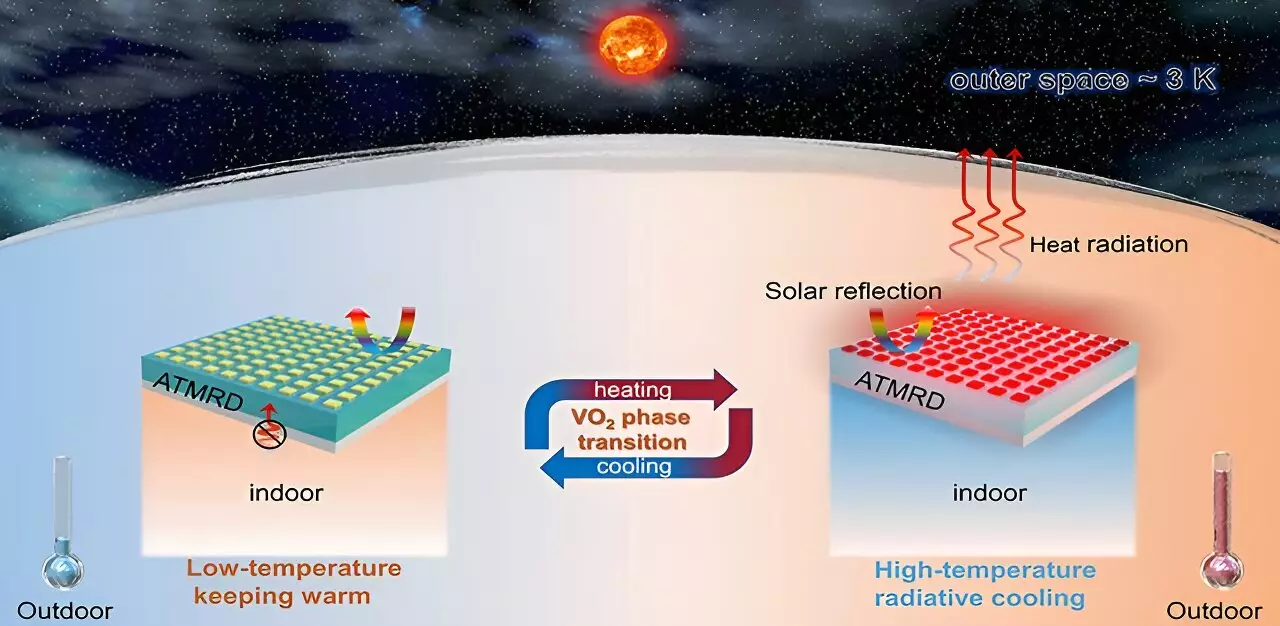As the world grapples with escalating energy demands and the stark realities of climate change, the search for innovative energy solutions has become imperative. The global community is increasingly recognizing the need for sustainable energy management strategies that minimize environmental impact while maximizing efficiency. Among the promising technologies garnering attention is passive radiative cooling—a method that enables objects to cool naturally by releasing heat into space, without the need for external energy sources. This technology holds the potential to significantly mitigate the energy crisis, but it also faces inherent challenges in its current implementations.
At the heart of radiative cooling lies the principle of high solar reflectivity combined with effective thermal emissivity. Ideally, materials that facilitate radiative cooling should reflect sunlight while efficiently radiating heat away from their surfaces. However, many of the radiative cooling solutions currently available exhibit static emissivity, a limitation that results in overcooling when environmental temperatures drop. This phenomenon inadvertently increases the burden on heating systems, compelling an urgent need for advancements in this field.
A promising direction for overcoming this limitation involves leveraging thermochromic phase-change materials. These innovative substances can dynamically adjust their thermal properties in response to environmental conditions, offering a solution to the overcooling problem. Recent research from the Beijing Institute of Technology has yielded significant breakthroughs in this area, leading to the development of a temperature-adaptive radiative cooling device.
The Groundbreaking Device: ATMRD
The newly developed device, referred to as the Temperature-Adaptive Metasurface Radiative Cooling Device (ATMRD), incorporates vanadium dioxide (VO2), a material celebrated for its ability to toggle between different thermal radiation states. The engineers’ use of a metasurface featuring a periodic array of VO2 squares allows for enhanced performance in radiative cooling, achieving an optimal balance between solar energy reflection and heat emission in varying temperatures.
The ATMRD marks a significant milestone in materials science, boasting a remarkably low solar absorptance of just 27.71%, which represents a 7.54% improvement over previous models. Furthermore, it exhibits an emissivity rate of 0.85 at elevated temperatures, exceeding earlier models by 13.3%. This groundbreaking design enhances the ability to modulate emissivity by 20%, representing a crucial leap in efficiently managing temperature fluctuations.
Lead researcher Prof. Jingbo Li emphasizes the importance of this advancement, stating, “By integrating a temperature-adaptive metasurface with vanadium dioxide, we’ve significantly improved the efficiency of radiative cooling technologies.” The fine-tuning of geometric parameters in the superstructure has paved the way for a deeper understanding of how these elements influence device performance. Additionally, it clarifies the mechanics behind enhanced thermal radiation, suggesting that strategic design can unlock further advancements in this sector.
The implications of this research extend beyond mere academic interest; they present practical pathways toward revolutionizing thermal management practices and harnessing renewable energy more effectively. As industries around the globe seek to adopt more eco-friendly practices, technologies like the ATMRD can offer real-world applications that far exceed current methodologies. This development could lead to substantial energy savings, thereby paving the way for a more sustainable future.
As climate concerns continue to mount, innovations in energy-efficient technologies are not merely advantageous—they are essential. The development of dynamic radiative cooling devices like the ATMRD exemplifies how scientific advancements can contribute meaningfully to energy management and environmental preservation. By optimizing the efficiency of thermal management systems, such technologies stand to play a pivotal role in addressing the challenges posed by climate change, ultimately guiding us toward a more sustainable and energy-conscious future. As researchers continue to innovate and refine materials and systems, the dream of a balanced, energy-efficient world may be more attainable than ever before.

